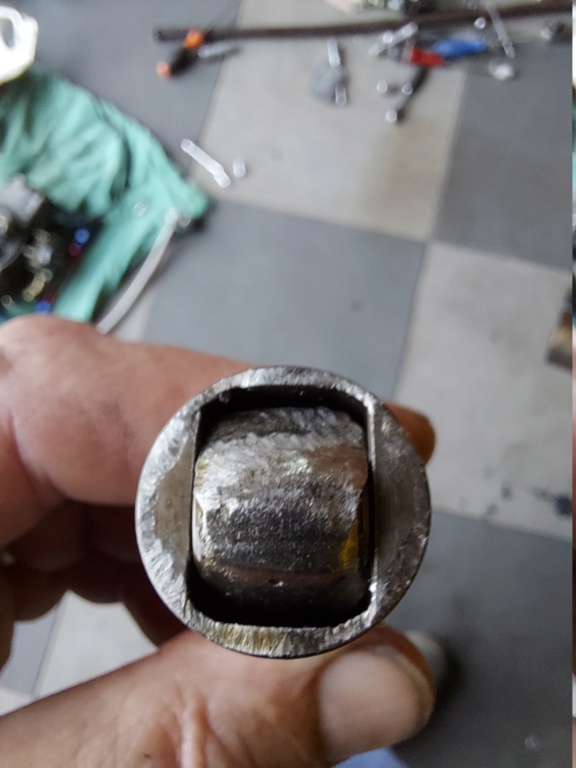Cams:
I think that the second cam, as you have listed is too much for a street car.
What will tell you the nature of a cam is the "Advertised Duration". 294° is the advertised duration on the cam that I recommend to you. It is about as hot as you want to go in a street car.
What 294° is telling you here is that it is hot but not quite a dedicated racing cam and streetable. That is what Compcams is telling you with that number.
The second one that you list has an advertised duration of 306°. The "rule of thumb" on this is 300° or more is too much for a street driven vehicle.
The Advertised Duration doesn't mean too much other then tell you the nature of the cam. The duration @.050" lift is the significant number.
There is so much duration in the over 300's that you will actually hear the engine spitting through the exhausts. I know street cars that use them but they are more race car then street car and a bear to handle on the street. Basically Drag Race set ups.
294° advertised in this case is going to be 248° @ .050" lift. I can tell you from experience that is a TREMENDOUS open track camshaft. It may seem at times a little much on the street but it loves an open track. It will outrun most of the ORIGINAL 1960's "factory road race cars".
236° @ .050" is what most "street machine owners" are happy with NOW. I have that cam in two of my other cars and it is very driveable on the street but no fun in bumper to bumper traffic.
Springs:
I didn't look for the spring load specifications in the cam kit but as I remember they are at least dual springs. They may be triple. You need to look at that.
The 460 pounds that you have now is not really necessary with solid lifters. About 360 pounds is what you need. There is a factor of valve guide wear with higher rates especially if you are not using a "roller bearing" rocker arm.
Depending on the weight of the valves, your potential rpm normally with the cam kit that Compcams supplies is about 7,200 rpm. Titanium valves will turn a bit more. 7,500rpm given the same other components but the stems are softer and wear faster then chrome molly stems.
I honestly can't tell you the maximum of the cam since I have never looked for it. Generally the car is "tuned" to max out about 6,500 to 6,700 rpm. Certainly that is where the headers were built to max out at and with the Webers that is complimentary to their power range.
I am aware of their recommendations for breaking in the cam.
So far, "knock on wood...knock, knock, knock", I have yet to wipe out a brand new camshaft.
I did not follow their break in procedure but yes you can change the springs while the heads are on the engine. It is not fun to do on any car and worse on a Pantera.
Spring tools:
Yes there are kits for changing the springs on the car. They actually are common since it is not unusual for racers at the track to have to do maintenance on the valve train with minimal amounts of time expended.
The Compcams with .587 lift is one step down and would be 236° @ .050" duration.
It will idle hot at about 850-950rpm. You CAN get it down to 800 ish but that's about it.
Most people would not go hotter then that.
Frankly, in "the old days" it wasn't unusual to try the hottest cam first, then step down one at a time until you find the one that you want.
Compcams timing events on their cams are almost identical from engine series to engine series in many cases.
You need to remember also that the actual valve lift is not the cam lift. You need to deduct the "valve clearance" from that which I think in this case is going to be either .022" or .028" (I forget at this moment and would need to look at the cam card to verify that).
What you need to match though is the valve flow numbers from the heads to the lift of the valves to maximize the potential. But the flow of the intake manifold runners is also involved in that and unless you go to an IR intake manifold with equal runners, that is difficult to get them all completely in balance.
The carbs are involved in that as well and Weber 48ida's with 42mm chokes are maxed out at 2400cfm total divided by 8 = 300cfm intake per cylinder. So anything that is going to give you more flow then that is really wasted effort.
That's why with Webers the engine at 5.7L max's out at about 6500 to 6700 rpm.
So you need to know the flow numbers of your heads from flow bench testing to tell you the maximum flow and at what lift to be completely scientific about the entire thing.
With a single 4v intake, it is very difficult to balance flow that closely because normally you have 4 runners that flow high and 4 runners that flow lower.
You COULD do that on something like a Boss 302 inline carb along with a matching IR manifold but the results may not be worth the additional cost and time involved.
It all depends on how crazy you want to get with this?
Incidentally, you can take some of the effect of long duration cams out with efi.
Those are just my experiences and I have no doubt that others will feel very differently. To say that I am crazy is as the "Brits" would say, "in Doug's case that's a bit redundant". 









